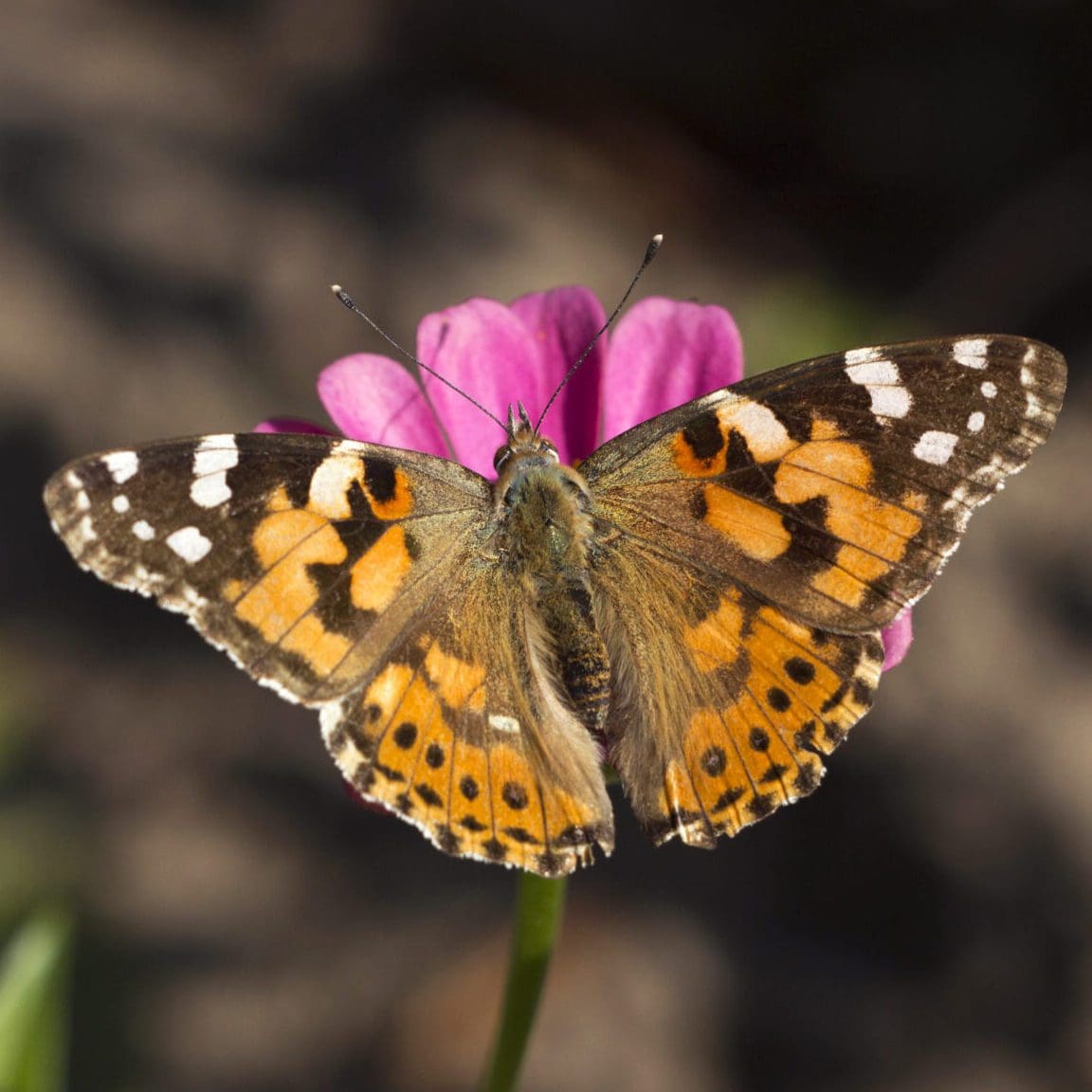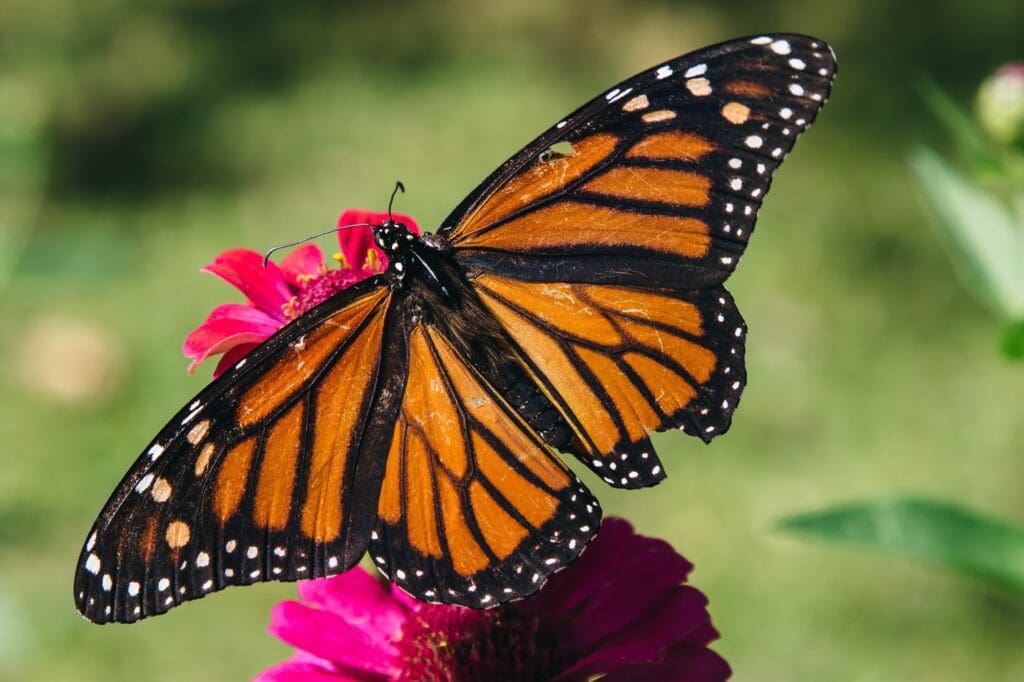

The life cycle of the monarch butterfly (Danaus Plexippus) is a captivating and intricate journey that unfolds in four distinct stages, each marked by unique transformations. This iconic insect, renowned for its vibrant orange and black wings, undergoes a remarkable metamorphosis from egg to caterpillar, pupa, and finally, the resplendent adult butterfly. The monarch’s life cycle is not only a testament to the marvels of nature but also a tale of resilience and adaptation. From the delicate eggs laid on milkweed plants to the epic migration undertaken by the adult butterflies, the monarch’s life cycle is a captivating narrative that weaves together science, beauty, and the perpetual cycle of renewal in the natural world.
STAGES OF THE INCREDIBLE METAMORPHOSIS
Egg (3 to 5 days)
Once the male and the female mate eggs are laid on the underside of a milkweed plant during the spring and summer months. They are so small that they will fit on top of a needle. Eggs take 3 to 5 days to hatch. When the caterpillars is close to hatching the top of the egg turns black.
Caterpillar (7 to 14 days)
The caterpillar goes through five major distinct stages of growth and after each one, it molts. Each caterpillar, or instar, that molts is larger than the previous as it eats and store energy in the form of fat and nutrients to carry it through the nonfeeding pupal stage.
At this stage of development, it is relatively large compared to the earlier instars. The caterpillar completes its growth. At this point, it is 25 to 45 mm long and 5 to 8 mm wide. This can be compared to the first instar which was 2 to 6 mm long and 0.5 to 1.5 mm wide. Fifth instar larvae increase 2000 times from first instars. Fifth-stage instar larva chew through the petiole or mid-rev of milkweed leaves and stop the flow of latex. After this, they eat more leaf tissue. Before pupation, larva must consume milkweed to increase their mass prior to pupation. Larva stop feeding and search for a pupation site. The caterpillar attaches itself securly to a horizontal surface, using a silk pad. At this point, it latches on with its hind legs and hangs down. It then molts into an opaque, blue-green chrysalis with small gold dots. At normal summer temperatures, it matures in a few weeks. The cuticle of the chrysalis becomes transparent and the monarch’s characteristic orange and black wings become visible. At the end of metamorphosis, the adult emerges from the chrysalis, expands and dries its wings and flies away. Monarch metamorphosis from egg to adult occurs during the warm summer temperatures in as little as 25 days, extending to as many as seven weeks during cool spring conditions. During the development, both larva and their milkweed hosts are vulnerable to weather extremes, predators, parasites and diseases; commonly fewer than 10% of monarch eggs and caterpillars survive.
Chrysalis – Pupa (7 to 14 days)
In the pupa or chrysalis stage, the caterpillar spins a silk pad on to a horizontal substrate. It then hangs from the pad by the last pair of prolegs upside down, resembling the letter ‘J’. It sheds its skin, leaving itself encased in an articulated green exoskeleton. During this pupal stage, the adult butterfly forms inside. The exoskeleton becomes transparent before it emerges, and its adult colors can finally be seen.
Butterfly
The adult butterfly emerges after about two weeks, and hangs until its wings are dry. Fluids are pumped into wings and they expand and stiffen. The monarch expands and retracts its wings, and once conditions allow it then flies to feed on a variety of nectar plants. Monarchs typically live two to five weeks during the breeding season.
Males that are fit are more likely to mate. Females and males typically mate more than once. Females that mate several times lay more eggs. Mating for the overwintering populations occurs in the spring, prior to dispersion. Mating is less dependent on pheromones than other species in its genus.
Courtship occurs in two phases. During the aerial phase, the male pursues and often forces the female to the ground. During the ground phase, the butterflies copulate and remain attached for about 30 to 60 minutes. Only 30% of mating attempts end in copulation, suggesting that females may be able to avoid mating, though some have more success than others. During copulation, the male transfers the spermatophore to the female. Along with sperm, the spermatophore provides the female with nutrition to aid her in egg-laying. An increase in spermatophore size increases the fecundity of female monarchs. Males that produce larger spermatophores also fertilize more females’ eggs.
One Response
thank you for the brief education. We have our pollinator garden which we believe will help pollinators increase their numbers and their very effective role in nature.